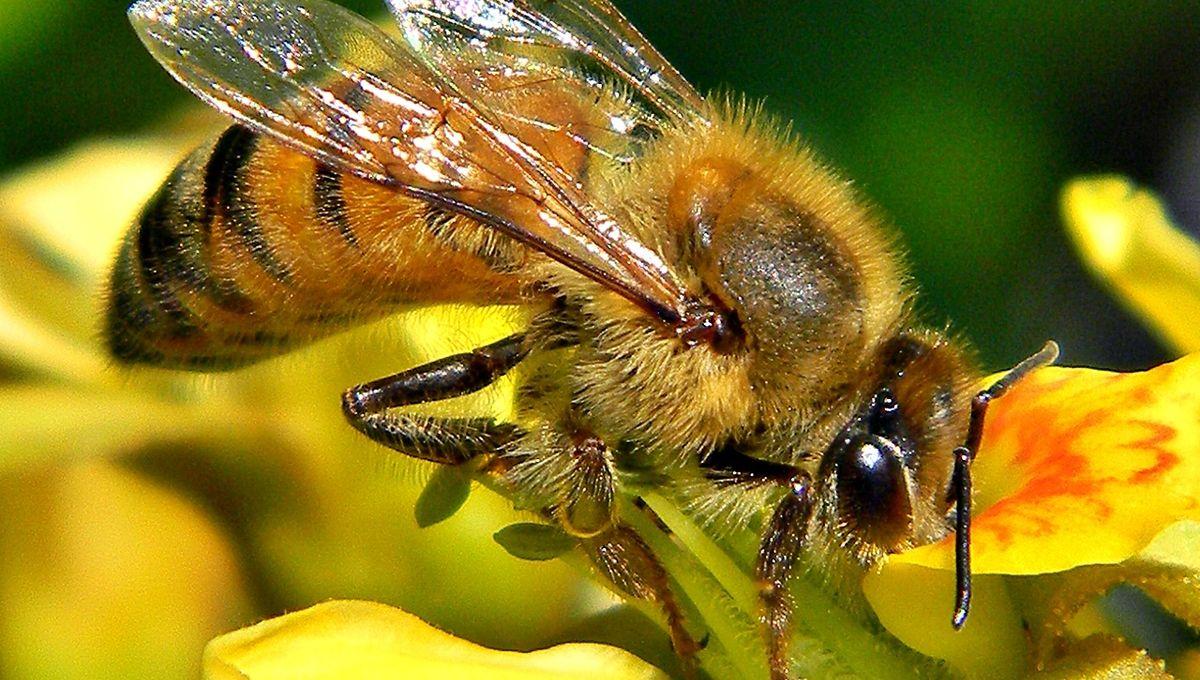-
Noticias Feed
- EXPLORE
-
Páginas
-
Blogs
-
Foros
The Secret To Saving Bees Might Be... Yeast?

The Secret To Saving Bees Might Be... Yeast?
Honeybees (Apis mellifera) are having a rough time. Between pesticides, parasites, disease, and climate change, their populations have been in sharp decline. This bad news is not just for bees themselves, but for us too. Honeybees are a fundamental part of modern agriculture because of their pollination service for crops.
The rest of this article is behind a paywall. Please sign in or subscribe to access the full content. Their diet mainly consists of floral pollen – a snack providing protein, fats, carbs, and a load of micronutrients, including a vital nutrient called sterol. But not all plants have that secret ingredient. With problems in shifting climates, intensive farming and changes in land use, bees are struggling to find enough of this food. When their diet takes a hit, so does their resilience. Sterols are an organic compound that is important for cell function. Animals can make their own supply, no problem. But for insects? They have lost the ability to synthesize their own sterols. Instead, they have to acquire them from their food, making their diet the key to keeping their cells working. Bees with poor nutrition are more vulnerable, leading to an alarming decrease in the bee population across the globe. Considering that honeybees power a massive percentage of global agricultural pollination, it’s a pretty big deal. To keep the colonies buzzing when natural food sources are running scarce, beekeepers provide sugar water or protein patties to struggling hives. However, whilst these substitutes can prevent bees from starving, they don’t come close to matching the full nutrition of real pollen and lack sterols. But now, science may have found an unexpected helper: engineered yeast. A team of researchers have developed supplements to mimic the complex diet from pollen and nectar in the wild through the engineering of yeast cells. Yarrowia lipolytica is not the yeast used for beer and bread, but one of the species used in science to synthesize metabolites. Through genetic modifications, the yeast can synthesize the exact mix of sterols bees usually get from pollen. To test whether engineered yeast could support honeybee colonies, researchers produced yeast biomass through fermentation, then dried and ground it into powder. This material was incorporated into artificial bee diets at 20 percent by weight, along with the usual proteins, fats, vitamins, and minerals that bees require. The study was run over three months and checked every 15 days, using small colonies enclosed in a field with no outside pollen available. The number of eggs laid by the queen bee was unaffected by diet. However, the development of larvae (grubs hatched from the eggs) and pupae (the development stage from larvae to bees) was significantly increased for those on the yeast supplement. Even though the yeast supplement diet had less than 0.5 percent by weight of sterol, the colonies showed great results of increased development from eggs to adulthood by up to 15 times. Bigger long-term trials are still needed to see exactly how this yeast-powered bee superfood affects hive health. But here’s the cool part: it isn’t just about sterols. Yeast biomass itself provides additional sources of protein, lipids, and vitamins, and it can be directly used without the need for sterol extraction. So when tweaking the yeast fermentation process, it might be better to focus on producing lots of yeast biomass rather than sterol yield. This strain of yeast is already deemed safe for food and feed use, including fish farming, showing great potential for future livestock farming. “Such technology could also provide an avenue for the development of feeds for other farmed arthropods,” explain the scientists. “Insect nutrition is an overlooked discipline,” commented Carlos Ribeiro of the Champalimaud Foundation, who was not part of the study team, in a Nature Research Briefing. “Through an inventive combination of bioengineering, diet manipulation and in vivo physiology, this study shows how targeted nutritional interventions can be developed to address honeybee-colony collapse.” Who knew that humble yeast could be used for bread, beer, and as a buffet for bees? This study is published in Nature.


